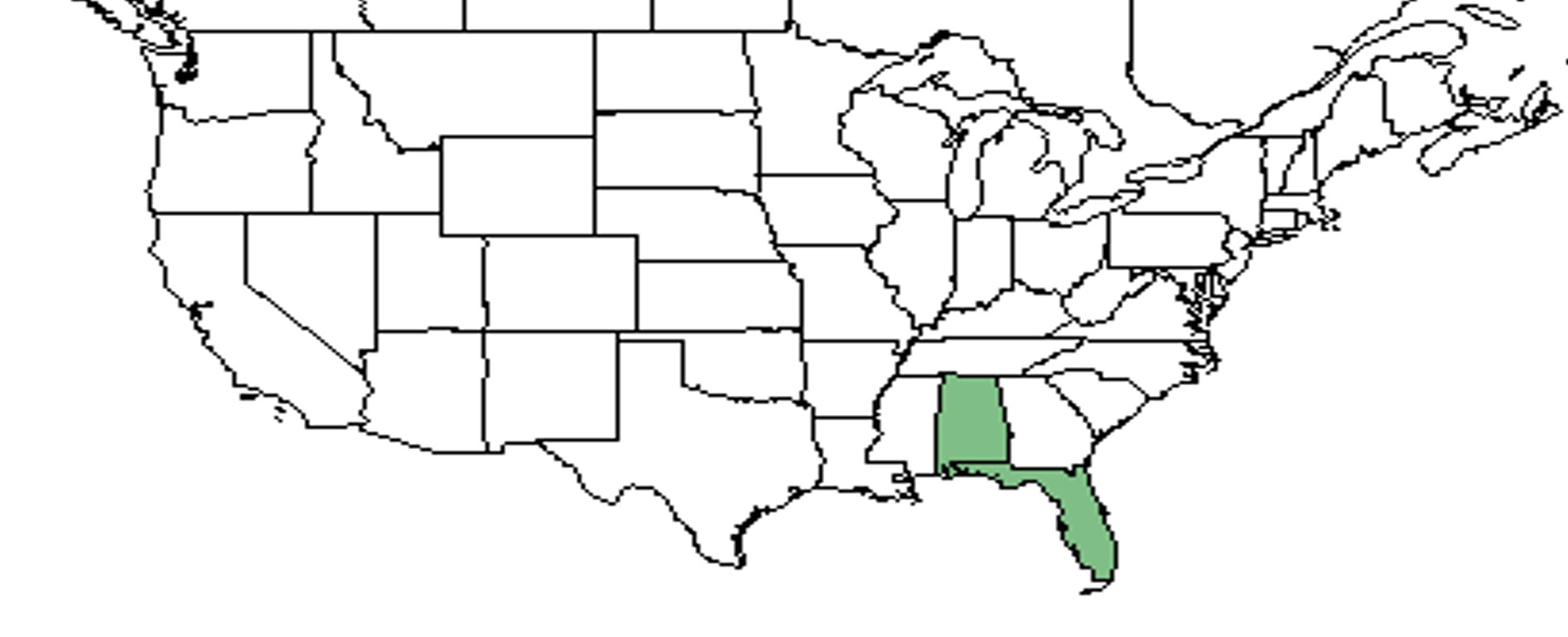Rhynchospora pineticola
| Rhynchospora pineticola | |
|---|---|
Error creating thumbnail: Unable to save thumbnail to destination
| |
| Scientific classification | |
| Kingdom: | Plantae |
| Division: | Magnoliophyta – Flowering plants |
| Class: | Liliopsida – Monocotyledons |
| Order: | Cyperales |
| Family: | Cyperaceae |
| Genus: | Rhynchospora |
| Species: | R. pineticola |
| Binomial name | |
| Rhynchospora pineticola C.B. Clarke | |

| |
| Natural range of Rhynchospora pineticola from USDA NRCS Plants Database. | |
Common name: Pine barren beaksedge (C.B. Clarke)
Contents
Taxonomic notes
Description
Documentation: Flora of North America, Volume 23 (2002), Bridges and Orzell (2000)
Rhynchospora pineticola C. B. Clarke, Bull. Misc. Inform. Kew, Addit. Ser. 8: 40. 1908.
Phaeocephalum intermedium (Chapman) House; Rhynchospora intermedia (Chapman) Britton 1892, not Beyrich ex Kunth 1835; R. plumosa Elliott var. intermedia Chapman
Plants perennial, mostly densely cespitose, 20–70 cm, base deep rich red brown; rhizomes absent. Culms erect to ascending, leafy, stiff. Leaves shorter than scape; blades narrowly linear, (1–)2–3 mm wide, margins involute, apex trigonous, tapering. Inflorescences: clusters 1–2, if 2 then close together, dense, broadly turbinate to hemispheric or lobed globose; primary leafy bract linear, stiff, exceeding clusters. Spikelets light to dark red brown, lance ovoid, 3.5–6 mm, apex acuminate; fertile scales ovate, convex, 3–3.5(–4) mm, apex acuminate, low midrib excurrent or not. Flowers: perianth bristles 6, reaching at least to tubercle base, plumose from base to more than 1/2 length of fruit body. Fruits 1(–2) per spikelet, (2–)2.5–2.8(–3) mm; body red brown or brown, tumidly obovoid, (1.5–)2–2.2 × 1–1.7 mm; surfaces interruptedly transversely rugulose; tubercle broadly conic, 0.5–0.8(–1) mm, base broadly 2 lobed, apex often apiculate. Fruiting spring–fall or all year. Sands and sandy peat of bog margins, pinelands and pine saw palmetto flats among wiregrass; 0–200 m; Fla.; West Indies (Cuba).
Rhynchospora pineticola is distinguished from taller extremes of R. plumosa by its thicker leaves and scapes and its longer spikelets and fruit. Its bases are a deep rich red-brown rather than the pale brown or dull deep brown of R. plumosa.
from Bridges (1994) - Draft for Flora of Florida:
Plants cespitose, forming small clumps. Culms terete, erect and slender, 2.5-6.5 dm tall. Leaf blades 2-3 mm broad, carinate, becoming 3-angled toward the tip, shorter than the culms. Inflorescence a terminal congested fascicle, broadly ovate, 1-2.2 cm wide, with an occasional smaller remote lateral fascicle. Spikelets lance-ovoid, sessile, 4.5-5.5 mm long, 1- to 2-fruited. Stamens 3. Anthers 1.5-2 mm long. Achene rotundly obovoid, 2-2.2 mm long, 1.4-1.7 mm wide, transversely ridged-rugose, brown. Tubercle conical to 0.6 mm high, the base joining the apex of the achene but extending as a shelf at its circumference, lighter than the achene. Bristles 6, equalling to slightly exceeding the tubercle, appressed to the achene at least in the lower part, plumose from the base to near the top where the hairs are replaced by stiff antrorse serrations. Edwin L. Bridges
Direct description information of Rhynchospora pineticola is provided in The Flora of North America.
Distribution
Sand pine and low oak scrub, dry sandy scrubby flatwoods, longleaf pine sandhill savannas. All year. Frequent on the sand ridges of the central Florida peninsula, extending south to Collier and Palm Beach counties along the coastal sand ridges, disjunct to Dade County, less frequent northward to Putnam and St. Johns counties in northeast Florida, and northwest along the Big Bend coastal sand ridges to Franklin County. Probably endemic to Florida, with an unverified report from Alabama.
Ecology
Habitat
Occurs in the open of sand scrub habitats, near wetland depressions, and pine flatwoods (FSU Herbarium). Associated species include Ceratiola ericoides, Quercus geminata, Serenoa repens, R. fascicularis, R. megalocarpa and Pinus elliottii (FSU Herbarium).
Phenology
Has been observed flowering from August through October (FSU Herbarium).
Seed dispersal
Seed bank and germination
Fire ecology
Pollination
Use by animals
Diseases and parasites
Conservation and Management
Cultivation and restoration
Photo Gallery
References and notes
Bridges, Edwin L.
Florida State University Robert K. Godfrey Herbarium database. URL: http://herbarium.bio.fsu.edu. Last accessed: October 2014. Collectors: Chris Buddenhagen, Edwin Bridges, Robert K. Godfrey, Robin B. Huck, Michael Jenkins, Harvey A. Miller, Steve Orzell, Cecil R. Slaughter. States and Counties: Florida: Collier, Osceola, Franklin, Polk, Putnam.